Good records and efficient labeling is key to growing your own seedlings! Here are the best methods and tools to mark and track seeds and seedlings!
Learning how to properly and efficiently grow your own garden vegetables and plants from seed is one of the best ways to increase your self sufficiency, grow a larger variety of food, and keep more money in your pocket!
But, there is a bit of a learning curve! And, the more seeds you start, the better your system will need to be! It took me about three years to really establish a good system and I’m always tweaking it to make it better. I’m sharing everything that I’ve learned (so far!) to help make your seed starting journey a bit easier!
In previous posts, we talked about some of the more exciting parts of growing your own seedlings, including:
- How to make your own seed starting soil mix
- How to choose the best containers for your seedlings
- How to sow your seeds in containers and trays
- How to water your seeds and seedlings during each stage of growth
Today, we are diving into an often over-looked part of seed starting: record keeping and labeling!
There are really two parts to this post: tracking (record keeping) and marking/labeling. Labeling your seeds seems like a no-brainer, but once you get to the point where you’re starting hundreds (or even just dozens) of seedlings and you are potting them up and moving them from container to container, it can get confusing! But, good labeling can help with that! Then, record keeping can take it the next level by giving you a wealth of information regarding the seeds you’ve grown – which will help you decide what to grow more of in the future!
Both labeling and tracking (record keeping) are vital to successful seed starting!
Before we dig into it all, you can check out this video, originally shared on my Instagram as part of an IGTV series on seed starting. In the video, I show you some of my favorite supplies and methods for labeling and record keeping.
[mv_video doNotOptimizePlacement=”false” doNotAutoplayNorOptimizePlacement=”false” jsonLd=”true” key=”x2gtv30xmfpce88dv6hl” ratio=”16:9″ thumbnail=”https://mediavine-res.cloudinary.com/v1618241703/ieu0c7lfbrwnfxinudhe.jpg” title=”How to Mark & Track your Seeds & Seedlings” volume=”70″]
** I may receive a commission at no additional cost to you from purchases made through links in this article. Full Disclosure Link**
Why is it important to keep records?
While it’s definitely not the most exciting topic, record keeping is an important part of growing your garden! Having an efficient and accurate way to record information about what you are growing is going to reduce a lot of confusion and waste. Here are 3 really good reasons why:
Records help us retain vital information about germination & growth:
Tracking all those tidbits of info (that you think you’ll remember but probably won’t!) is important! It helps us remember which seeds and seedlings performed best. After you plant your seeds, record information like germination time and germination success rate. Once the seedlings are growing, record info like growth rates, overall health and vigor, etc.
All of this information is going to help you in future years as you decide which varieties to grow and which ones to skip! I look back at my records each year to see which varieties germinated and grew the best. If I have more than two years of trouble growing a particular variety, I will generally move on to a new variety instead.
Records can help reduced confusion & stress:
If you are like me, your brain may not actually retain info as well as you think it does! I always think I’ll remember which varieties I grew and which ones I liked best. But I don’t! Luckily, I can always look back at my records and remember that it was the Sasha tomato that under-performed this year but the Moscow gave me the big pink tomatoes. Record keeping helps reduce confusion and relieves stress that is caused by trying to “remember it all”!
Records can show us our year-over-year progress:
I love having a record of what I grow each year! I’m super competitive with myself, so I always try to “one-up” myself! But, more importantly, keeping yearly records allows me to see how much I’ve grown (no pun intended) in my gardening skills! Each year, as I add more and more variety to my garden, it shows up in my records.
It’s so rewarding to see just how far we’ve come over the years, from struggling to grow just a few tomatoes from seed to packing my entire 1000 square feet of growing space with veggies and plants grown from seed. Celebrating your accomplishments is important! But it’s hard to recognize all that success without a record of how far you’ve come!
How to Track Seeds & Seedlings (AKA: Record Keeping!)
Now that we’ve established why record keeping is so important, let’s talk about how to track and record vital info about your seeds and seedlings. There are a million different ways that you can record your seedling information. Truly, the sky is the limit in finding a system that works for you! I’ll touch on some of the more common methods below:
Planting Tracker (free in the Homestead Management Binder)
The Planting Tracker is one of my essential garden record keeping tools, which is why I include it in the Homestead Management Binder. It has spots to record the plant/variety type, date sown, number sown, number germinated and notes regarding germination and growth.
I print out a few copies each year and have them on a clipboard. As I plant my seedlings, they get marked on the Planting Tracker right away! For me, it’s super convenient to have pen and paper ready to record all those notes! I number each plant/variety on the Tracker and that number corresponds to the number on the plant label. I keep the tracker and reference it each year when I start my new seeds so that I know which varieties did best.
You can get your free copy of the Planting Tracker (along with a bunch of other garden planning sheets!) in the Homestead Management Binder.
Garden Journal
The old fashioned garden journal has been an invaluable tool for many gardeners over the years! No fancy supplies are needed, just grab a notebook or journal and use it to record anything and everything about your garden! If you need some inspiration, check out these beautiful garden journal ideas from Cottage at the Crossroads.
I don’t have a garden journal, but I do have a garden binder. Honestly, I’ve just never been able to fully embraced the garden journal. Something about it intimidates me – I think it’s the fact that I can’t organize a bound notebook like I can a binder! But, I do love and heavily rely on my garden binder! Whatever format you decide on, make it useful and make it your own!
Spreadsheets
One thing that I do love is a good spreadsheet! Seriously, they make my heart happy. Yes, I understand that I am a weirdo. But, if you are a weirdo like me, you may also enjoy a good spreadsheet to track information about your seeds and seedlings!
I use spreadsheets the most when planning what I’m going to grow for the year. I have a basic format created where I can record the varieties that I want to start, the estimated start date, whether they will be direct sow (in the ground) or started indoors, etc. I still rely on my paper Planting Tracker because there’s no way my messy hands are typing on my computer when I’m in the middle of sowing hundreds of seeds! I will however sometimes take that info on my Planting Tracker and import it into the spreadsheet so that I have a digital copy of the info.
How to Mark your Seeds & Seedlings (aka: Labeling!)
Now that we’ve talked about how and why we should keep good records of our seeds starting efforts, it’s time to talk how to actually label your seeds!
This is so so important! For reals, listen to my words and LABEL YOUR SEEDS AS YOU PLANT THEM!
Why do I think this is so important? Because half the time I don’t heed my own advice! I’ve learned (and continue to learn) the hard way! I always think that I’ll remember what I’m planting. Nope! Big fat nope!
I’m telling you right now: you won’t remember so write it down right away!
Even if you think you will remember long enough to run inside and wash your hands before writing down what you planted – don’t! Because you will get inside and fill your water and let the dog out. Then, by the time you get back outside, those 50 seed trays start looking awful indistinguishable! So grab some plant markers and label everything when you plant it!
Types of markers for seeds and seedlings:
Popsicle sticks & wooden markers:
Popsicle sticks are a super cheap and easy option for plant makers. They work well for seed trays and you can write directly on them with a permanent marker. I really like that they are are just wood, so if I loose them in the garden it’s not a big deal. However, they do have the tendency to harbor mildew and have mossy fungal issues. This is the reason that I actually stopped using them in my seed trays here in Washington. But, they are a good temporary option, especially in less humid regions.
Plastic markers:
Plastic markers are another great option for seed trays! They can be sanitized with a bleach-water solution and used year after year. Plus, they don’t harbor mildew like wooden sticks do. The only drawback is that if they break off in your soil, they can be hard to find – and no one wants plastic in their garden!
These are what I generally use. A few years ago, I started using a numbering system rather than trying to write the entire name of the plant variety on the tag. The number on the marker match the number for that plant/variety on the Planting Tracker. I usually just scribble over the numbers with new ones each year but I have heard you can use fingernail polish remover to remove the old writing off of the marker.
Decorative plant markers:
There are a huge variety of beautiful decorative plant markers available! These are super fun and I definitely use some of them in my garden. However, they are basically just decorative. I find that they are very limited to only the traditional veggie crops and can be very pricy! They make a fun decorative additions to the garden space, I just don’t rely on them for record keeping and tracking of my seeds.
Mapping & numbering systems:
A final option for labeling your plants doesn’t actually utilize a physical marker at all. You can make a map of your seed trays and assign each cell a number. Then, on a coordinating sheet of paper (or a spreadsheet) you can record the info about the plant variety in each cell. Here’s a more in-depth article from Empress of Dirt on the topic.
Similar to the mapping system is the numbering system that I use. As mentioned above, I still use plant markers (usually the plastic ones). Each plant variety is assigned a number. I write that number next to the info recorded about the variety on the Plant Tracker. Then, I place a plant marker in the containers/cells with that variety. So, for example, Ping Tung Eggplant is number 26 and the cells with those seeds are given a plant marker with the same number.
There are definitely endless ways that you can record your seed starting efforts and mark your plants. The important thing is to pick a good method and make sure it is clear, easy to use and will give you enough information.
How do you mark and track your seeds and seedlings? Tell us your tips in the comments!

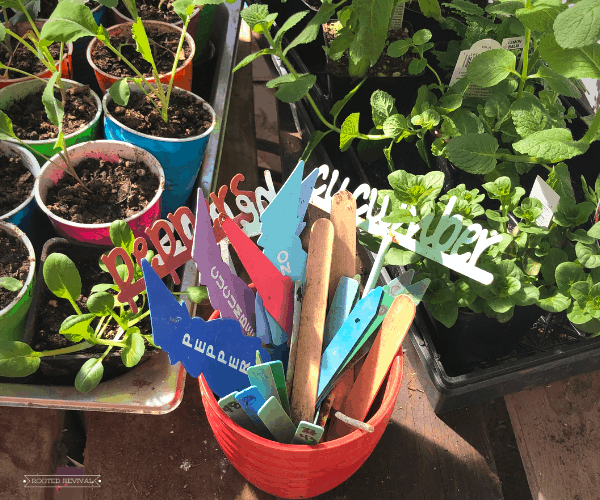












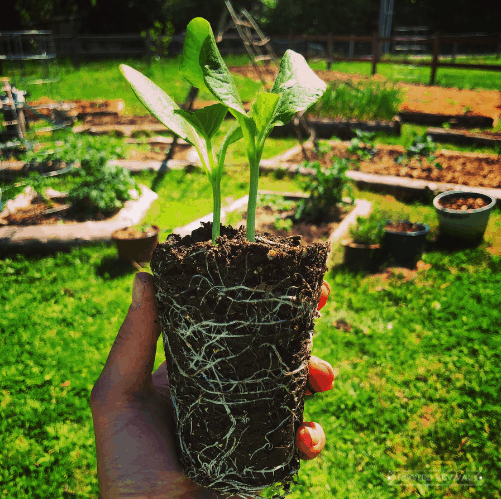
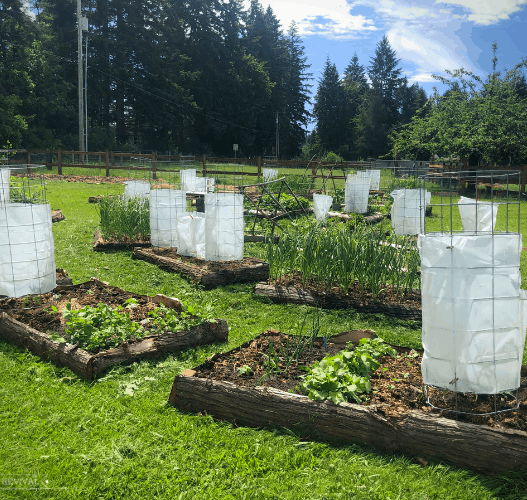
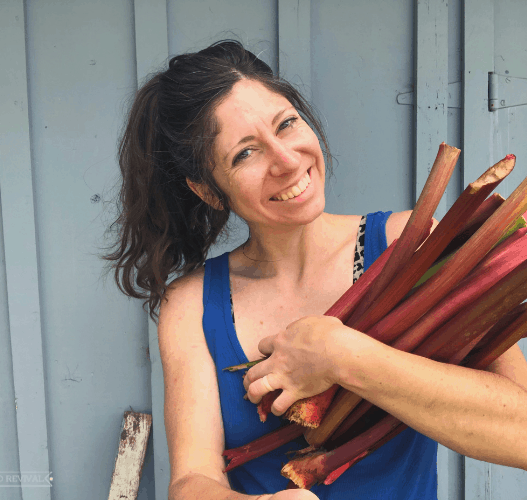



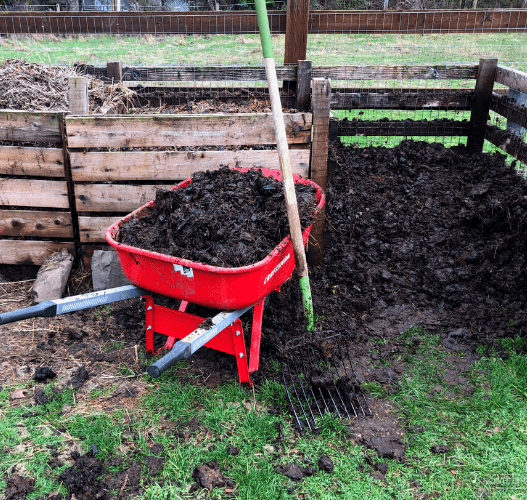

I wonder if you could update this post regarding what info to consider putting on a plant marker? In my experience we need different info on the label for a flat of seeds we started indoors compared to the info we need on a plant label IN the garden. For the seeds I start, it’s one label per flat to tell me the variety, the typical days to germination, and the source. After a few seasons, I figured out what seed companies consistently have the highest quality seed. I also don’t give up on seeds that have an extra long time to germination. IN the garden, variety name, date planted out, days to first fruiting, and the source. After a few seasons, I can tell what varieties do well for me and can re-order from the same source. Just a suggestion! Happy gardening in 2022:)
It sounds like we have very similar systems for labeling our flats. I also only do one tag per variety. In the garden, I actually tend to use mapping more than anything. I have a detailed spreadsheet where I record very similar information to you and it corresponds to a planting map for each bed. Our chickens destroy any plant tag I put in the garden so I gave up relying on that system a few years ago! But I love your suggestions and you are completely right about how effective it is to track which seeds perform best! Good records are hard to keep, but they make a huge difference!! Love hearing your experience in tracking different varieties – so glad you shared!
Thanks! We started using plastic knives – they poke easily into the soil, can be washed and re-used, and can travel with the plant from flats, to pots, to outside without rotting or fading.
That’s a great idea!!
Thank you so much for the suggestion of making my spreadsheet have numbers to correlate to the specific variety. I have hundreds of varieties I want to start and want to label prior to sowing seeds so I don’t have to do anything but play in dirt when I’m ready to sow. The number system was the easiest column I could add to maintain the tedious and detailed records I started! I think I will also use the plastic knives suggested in the comments instead of plant labels that break and chip. Thank you!
Ps. The links to the planner/downloads are not working for me but I was interested in your printable. Thanks!
@Darlene, You’re welcome! I’m glad the numbering system is working well for you. Using plastic knives as labels is a great idea too—they’re sturdy and easy to write on.
For the planner/download links, let me help you out. Can you tell me which specific printable you’re looking for? I can either provide a direct download link or guide you through accessing it.